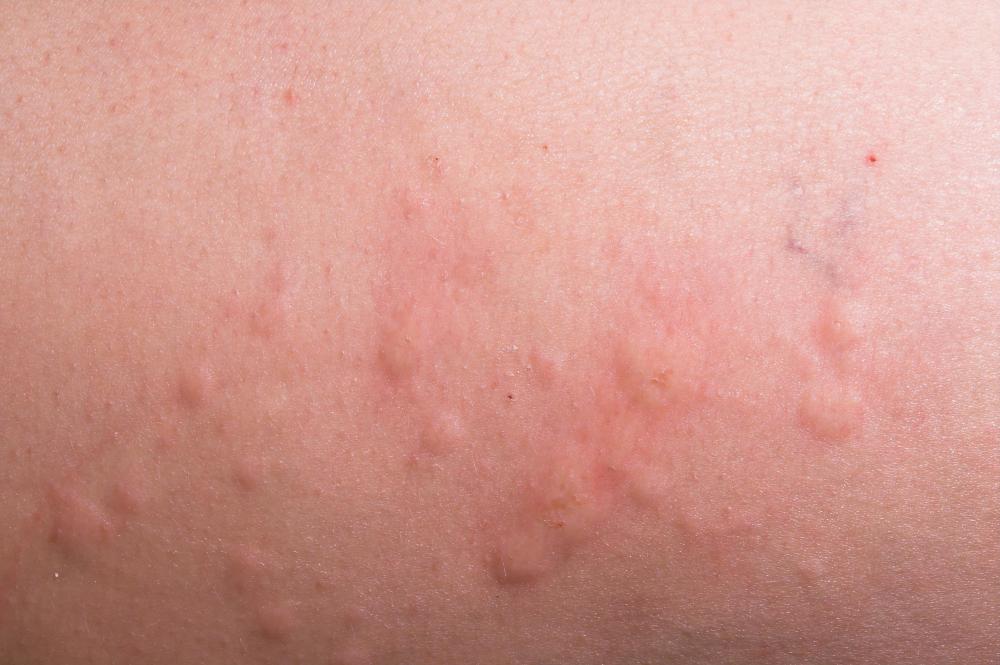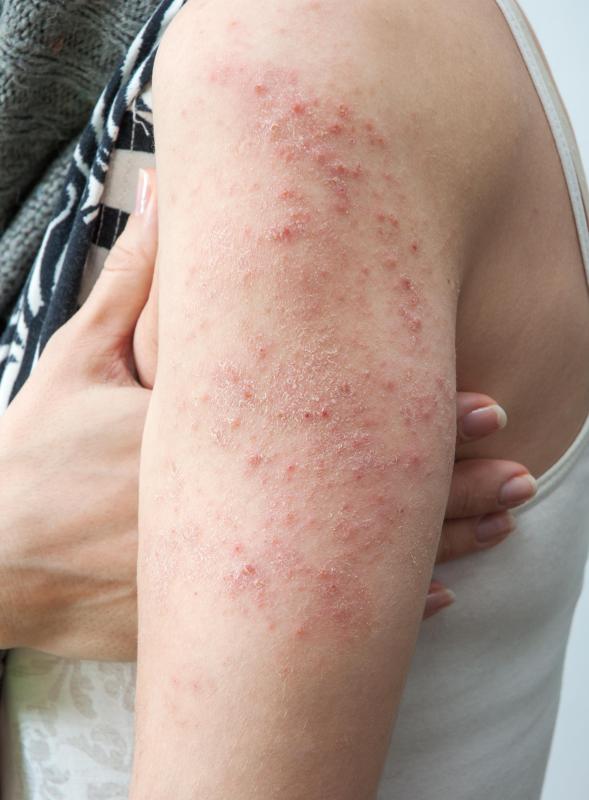
................................................................................................................................................................
Written
by Rachel Nall, RN, BSN, CCRN
Medically
reviewed by Alana Biggers, MD
What is a chlorine rash?
Chlorine is an element that pool
owners use to disinfect water, making it safer to swim in it or to get in a hot
tub.
Thanks to its capabilities as a
powerful disinfectant, it’s also added to cleaning solutions.
While chlorine has a lot of benefits,
if you love to swim, frequent exposure to it can have some negative effects.
The element can be drying to skin and
lead to irritation, even if you’ve previously been swimming in chlorine and
haven’t had skin problems.
If you get a chlorine rash after
swimming, you aren’t necessarily allergic to chlorine, just sensitive to it.
Fortunately, there are ways to treat
chlorine rash without having to avoid swimming entirely.
·
itchy, red rash
·
scaling or crusting
·
small bumps or hives
·
swollen or tender skin
Your eyes may also be irritated from
chlorine exposure.
Sometimes chlorine can also be
irritating to the respiratory tract. You may notice you frequently cough and
sneeze when you’re exposed to chlorine.
Both a chlorine rash and swimmer’s itch are swimming-related
rashes.
However, a chlorine rash is a
reaction to chlorine exposure while swimmer’s itch is caused by microscopic
parasites that live in fresh water.
These parasites are released from
snails into the water.
When a swimmer comes in contact with
them, the parasites can burrow into the skin. The result is a rash that can
cause pimple-like responses or small pimples.
The medical name for this condition
is “cercarial dermatitis.”
Identifying the difference between a
chlorine rash and swimmer’s itch often depends on where you’ve been swimming.
Pools have chlorine added to them,
while fresh water doesn’t.
If a pool is well-maintained and uses
the appropriate amount of chlorine, it shouldn’t have these parasites.
You’re more likely to experience
swimmer’s itch when swimming in fresh water or salt water, especially the
shallow water by a shoreline.
Not all people who swim experience a
chlorine rash. People often experience chlorine rash related to repeated
exposure to chlorine.
The immune system may identify the
chlorine as a “foreign invader” like a bacteria or virus and become inflamed
and irritated.
The chlorine can also remove the
natural oils on the skin, causing it to become dry.
Even if you bathe or rinse off after
exposure, some element of the chlorine remains on your skin. The continued
exposure can cause prolonged irritation.
This means those at risk for
reactions include:
·
lifeguards
·
professional cleaners
·
swimmers
Sometimes a pool’s caretakers may add
too much chlorine to the pool. An excess of exposure to chlorine can be
irritating.
Have medical questions? Connect with
a board-certified, experienced doctor online or by phone. Pediatricians and
other specialists available 24/7.
 You can usually treat a chlorine rash
with over-the-counter (OTC) products. This includes corticosteroid creams, such
as hydrocortisone.
You can usually treat a chlorine rash
with over-the-counter (OTC) products. This includes corticosteroid creams, such
as hydrocortisone.
However, most doctors don’t recommend
putting hydrocortisone cream on the face as it can thin the skin or get in the
mouth and eyes.
If you experience hives, you can
apply a diphenhydramine cream or take a medication that contains
diphenhydramine, such as Benadryl.
You can also purchase body washes or
lotions that remove chlorine and are designed to soothe the skin. Examples
include:
Avoid lotions that are highly
perfumed, as they can add to the potential irritation from chlorine.
Ideally, these topical applications
will help to reduce the incidence of chlorine rash and keep you swimming and
cleaning more comfortably.
If you have a severe allergic reaction, such as hives that won’t go
away or difficulty breathing, you should seek emergency medical treatment.
A medical specialist — an allergist —
can help to diagnose and treat further problems related to chlorine rash.
This is true for those who experience
a chlorine rash but plan to continue their exposure, such as swimmers.
If your chlorine rash does not respond
to OTC treatments, you should see an allergist. The allergist can prescribe
stronger treatments such as prescription corticosteroid creams.
Some of the ways to prevent a
chlorine rash include:
· Taking a bath or shower before and after you’re exposed to
chlorine. If you apply lotions to skin that has chlorine present, it’s only
likely to irritate it more.
· Applying petroleum jelly, such as Vaseline,
to areas that are irritated before going into a pool or doing cleaning. This
provides a protective barrier between your skin and the water.
· Another option is to take a break from a pool or cleaning
solution that contains chlorine for a while and allow the skin to heal.
Repeated exposure when you have a
chlorine rash will likely only irritate the skin further.
Alana
Biggers
MD
Internal
Medicine
Dr.
Alana Biggers is an internal medicine physician. She graduated from the
University of Illinois at Chicago. She is an assistant professor at the University
of Illinois at Chicago College of Medicine, where she specializes in internal
medicine. She also has a master’s of public health in chronic disease
epidemiology. In her spare time, Dr. Biggers likes to share healthy living tips
with followers on Twitter through @Doc_prevention.
Healthline’s Medical Affairs
team focuses on ensuring Healthline’s content, products, and services uphold
the highest standards of medical integrity. Our dedicated team also manages our
extensive clinician network, which provides medical review for all clinical
content. Covering the full spectrum of medicine, Healthline’s physicians,
nurses, public health experts, and patient advocates help ensure that the
information you receive is accurate, evidence based, current, and trustworthy.




No comments:
Post a Comment